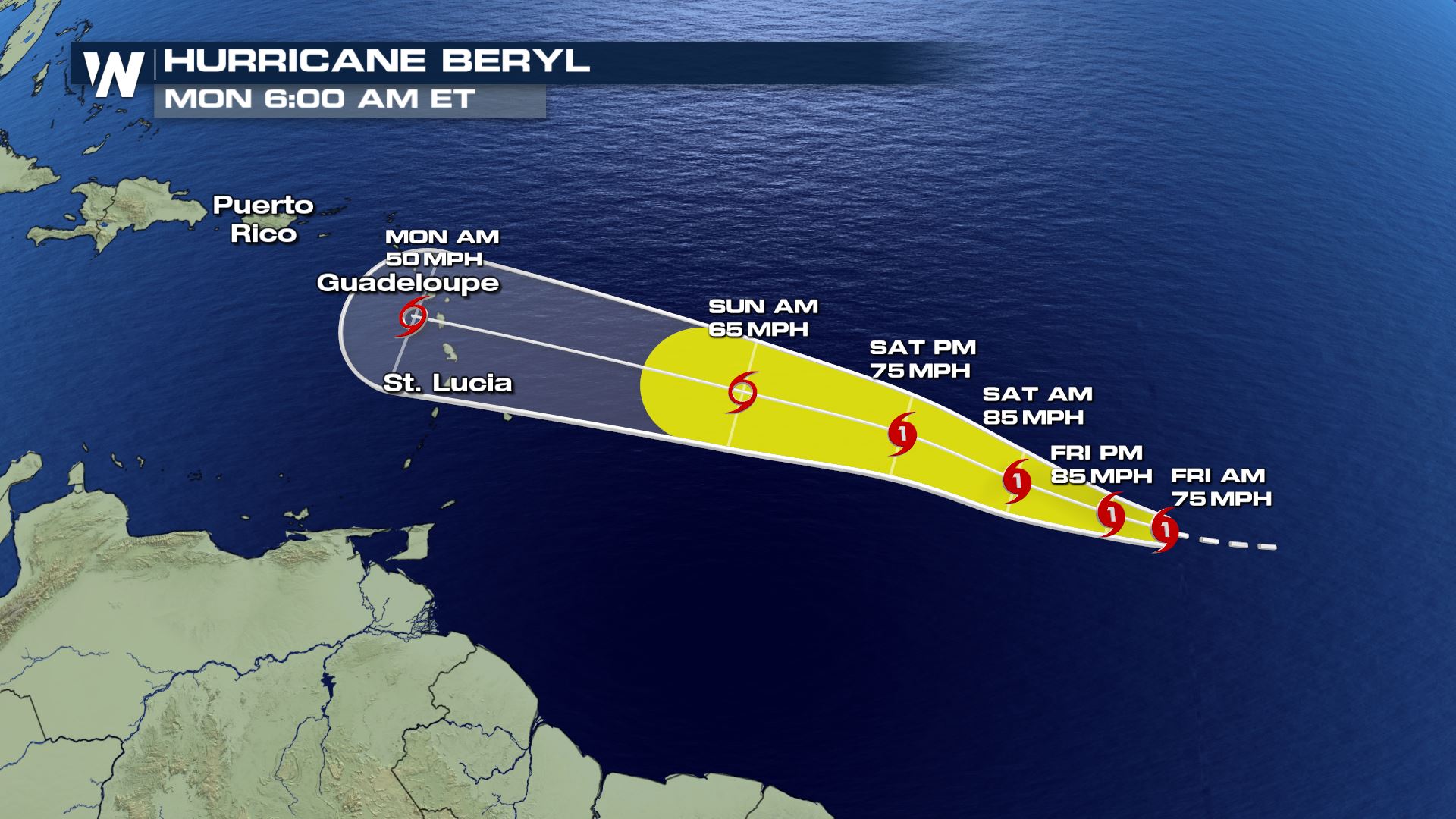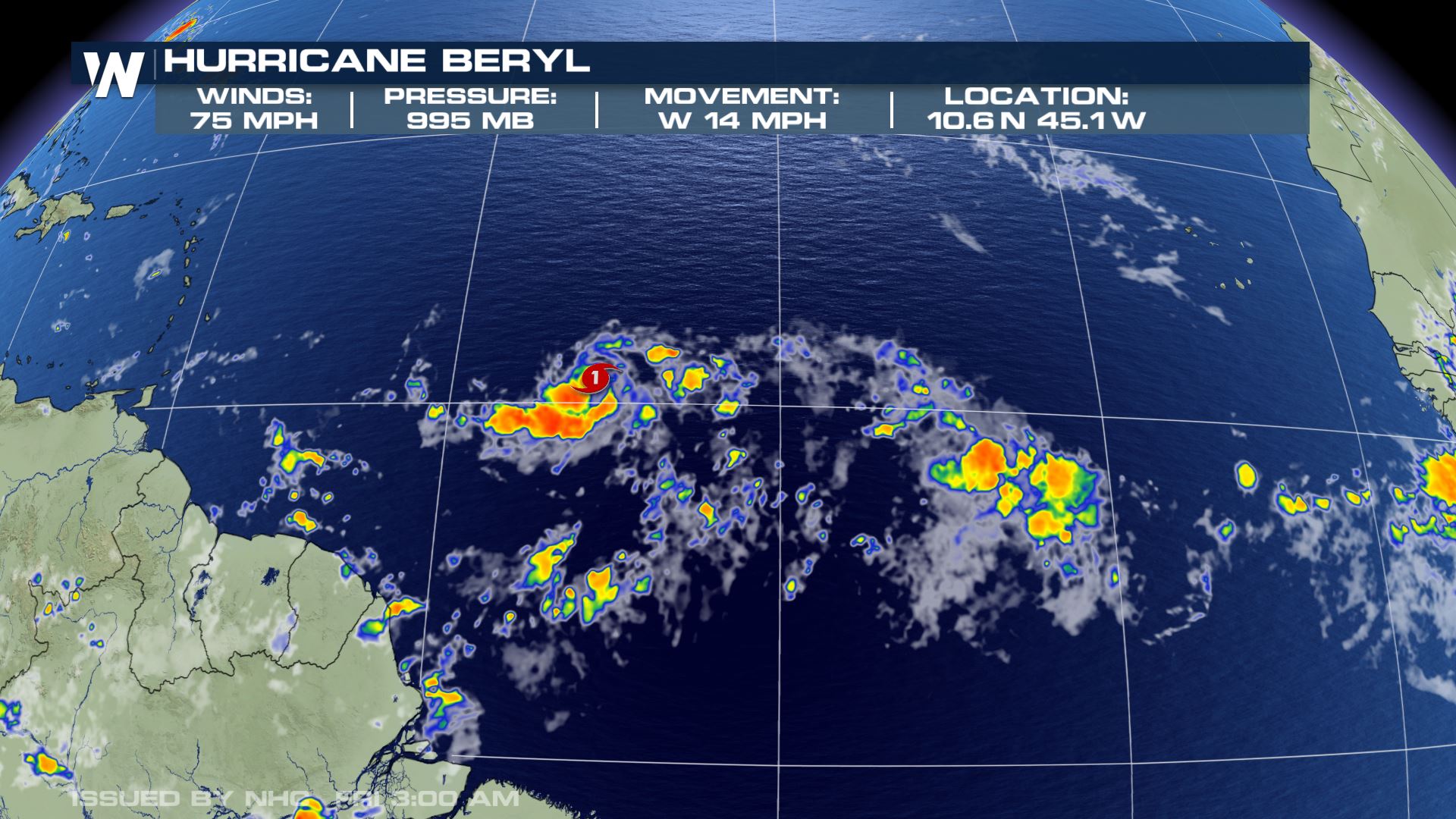Hurricane Beryl’s Forecasted Path

Hurricane beryl forecast – Hurricane Beryl is a Category 1 hurricane that is currently located about 1,000 miles east of the Lesser Antilles. The storm is moving west-northwest at 15 mph and is expected to strengthen over the next few days.
Hurricane Beryl is expected to make landfall on the east coast of Florida by the end of the week. It is currently a Category 3 hurricane, with winds of 120 mph. Forecasters are still tracking the storm’s path, but it is expected to turn northward and make landfall near Cape Canaveral.
For more information on the hurricane’s projected path, please visit where is beryl headed. The National Hurricane Center is advising residents in the affected areas to prepare for the storm and to follow local evacuation orders.
The National Hurricane Center has issued a hurricane watch for the Leeward Islands, including Antigua, Barbuda, St. Kitts and Nevis, Montserrat, Anguilla, Saba, St. Eustatius, St. Maarten, and Guadeloupe.
Hurricane Beryl, a Category 1 storm, is expected to strengthen as it moves towards the Lesser Antilles. Barbados is currently under a tropical storm warning as Beryl is forecast to pass near the island on Saturday. The storm is expected to bring heavy rain, strong winds, and possible flooding to Barbados and other islands in the region.
Residents are advised to monitor the storm’s progress and take necessary precautions.
Hurricane Beryl is expected to reach the Leeward Islands by late Tuesday or early Wednesday. The storm is then expected to turn northwest and move towards Puerto Rico and the Dominican Republic.
Potential Impact Areas
The following areas are at risk for impacts from Hurricane Beryl:
- Leeward Islands
- Puerto Rico
- Dominican Republic
- Turks and Caicos Islands
- Bahamas
- Florida
Estimated Timeline of the Storm’s Arrival
The following is an estimated timeline of Hurricane Beryl’s arrival in the following areas:
- Leeward Islands: late Tuesday or early Wednesday
- Puerto Rico: Wednesday night or Thursday morning
- Dominican Republic: Thursday night or Friday morning
- Turks and Caicos Islands: Friday night or Saturday morning
- Bahamas: Saturday night or Sunday morning
- Florida: Monday or Tuesday
Hurricane Beryl’s Intensity Forecast

Hurricane Beryl is predicted to intensify rapidly over the next few days, reaching Category 4 strength by Tuesday. The storm is expected to bring high winds, heavy rainfall, and a potentially devastating storm surge to the Gulf Coast.
The intensity of a hurricane is determined by a number of factors, including the temperature of the ocean water, the wind shear, and the Coriolis effect. Hurricane Beryl is moving over warm ocean waters, which will provide the energy it needs to intensify. The wind shear is also expected to be low, which will allow the storm to maintain its organization. The Coriolis effect is a force that deflects objects moving in the Northern Hemisphere to the right. This force will help to keep Hurricane Beryl on track as it moves towards the Gulf Coast.
Wind Speeds
Hurricane Beryl is expected to have maximum sustained winds of 130 mph by Tuesday. These winds are strong enough to cause significant damage to buildings, trees, and power lines. Hurricane-force winds extend outward up to 30 miles from the center of the storm.
Rainfall, Hurricane beryl forecast
Hurricane Beryl is expected to bring heavy rainfall to the Gulf Coast, with some areas receiving up to 10 inches of rain. This rain could cause flooding, mudslides, and other hazards.
Storm Surge
Hurricane Beryl is expected to produce a storm surge of up to 10 feet along the Gulf Coast. This storm surge could cause extensive damage to coastal communities and infrastructure.
Hurricane Beryl’s Impact Assessment: Hurricane Beryl Forecast

Hurricane Beryl has the potential to cause significant impacts in the areas it passes through. These impacts include flooding, power outages, and infrastructure damage.
Flooding is a major concern, as heavy rains associated with Hurricane Beryl can lead to rising water levels in rivers and streams. This can cause flooding in low-lying areas and along coastlines. Power outages can also occur due to downed power lines and damaged infrastructure. This can disrupt essential services and businesses.
Infrastructure Damage
Hurricane Beryl’s strong winds can cause damage to buildings, bridges, and other infrastructure. This can lead to disruptions in transportation and communication, as well as increased risks to public safety.